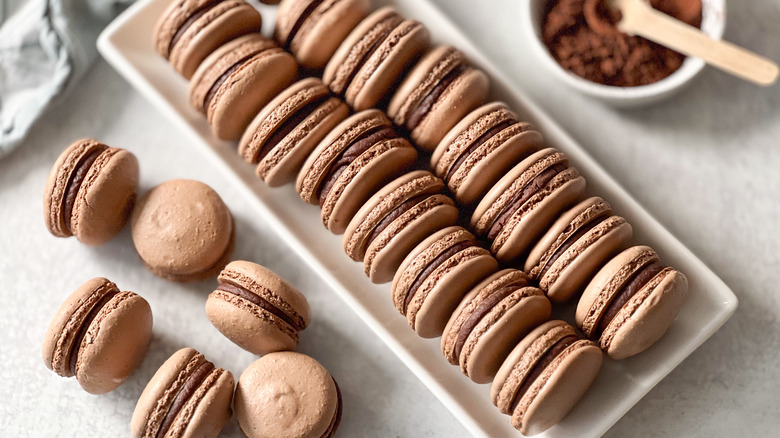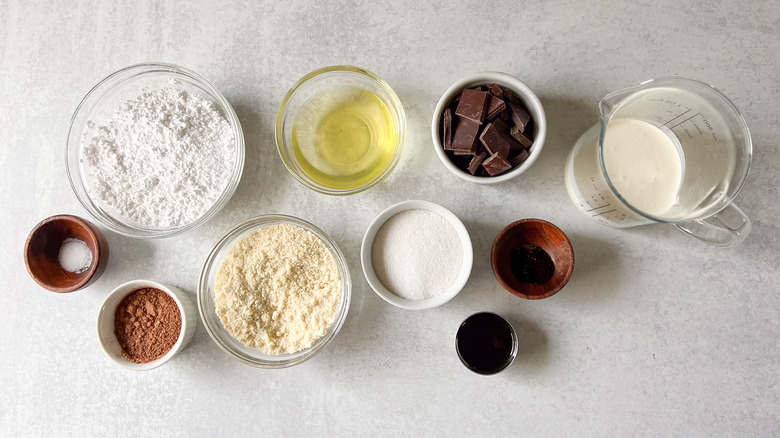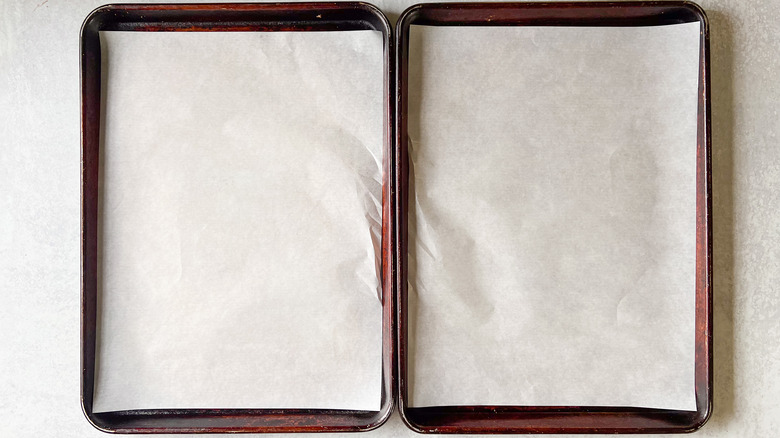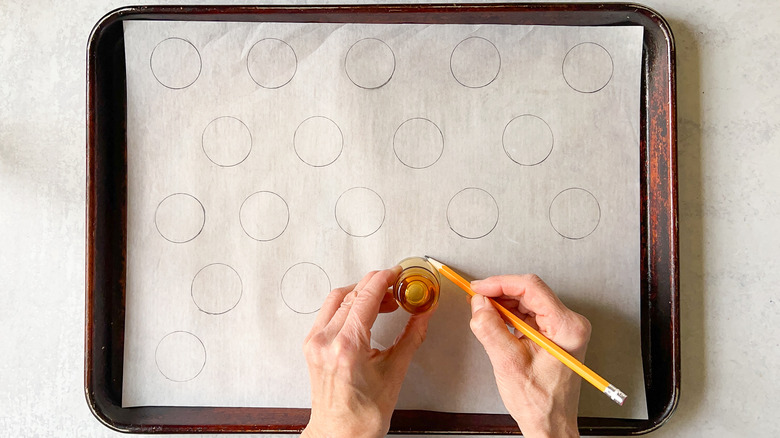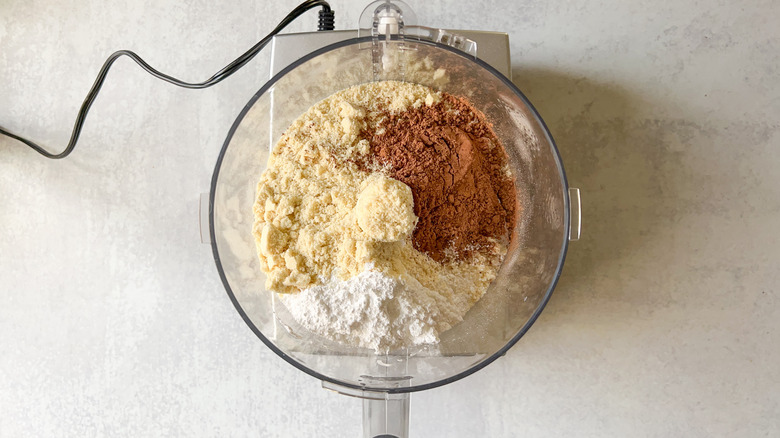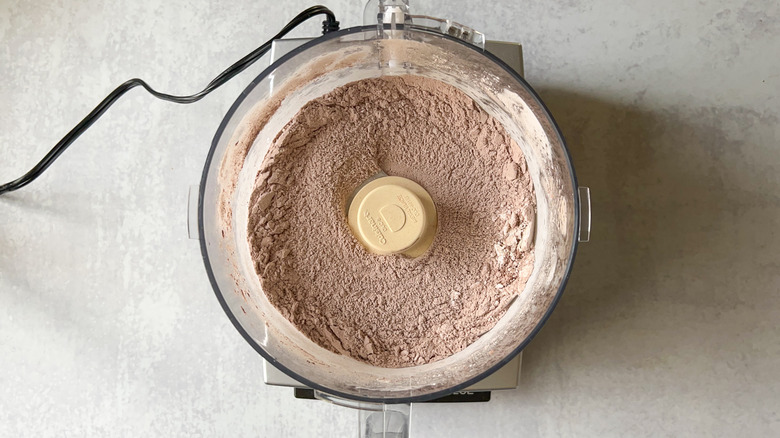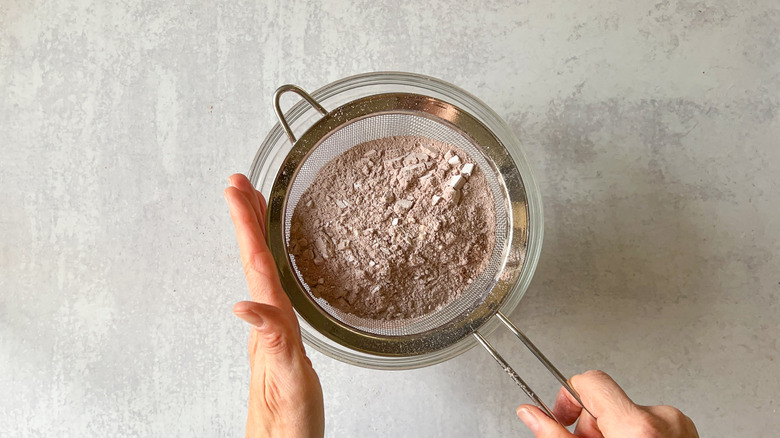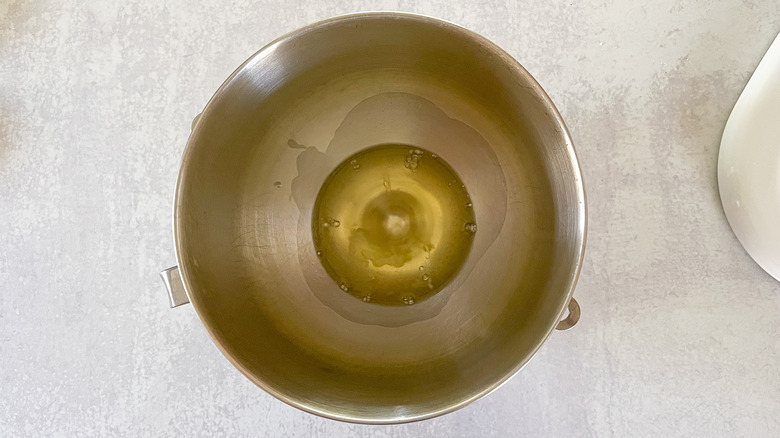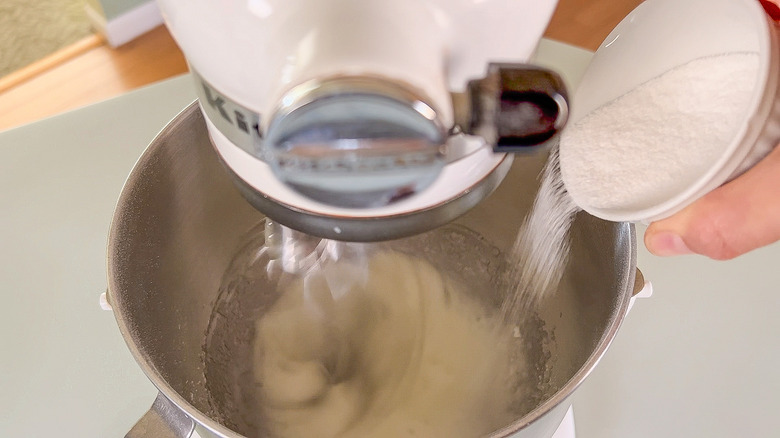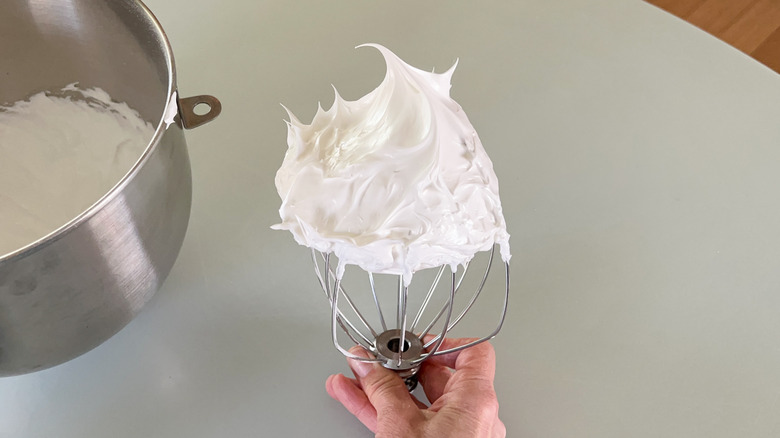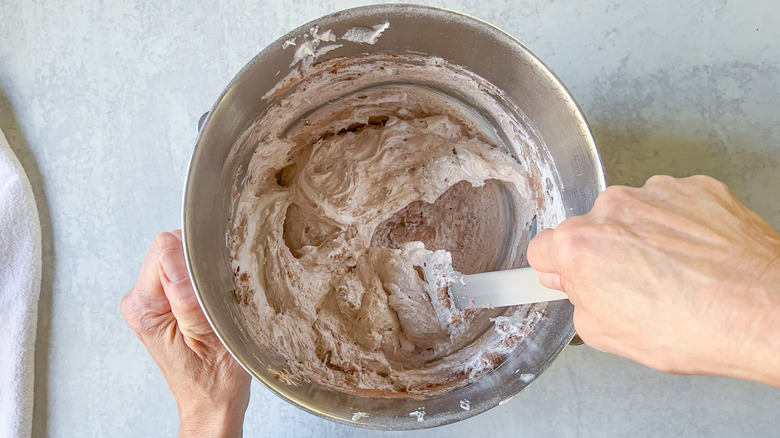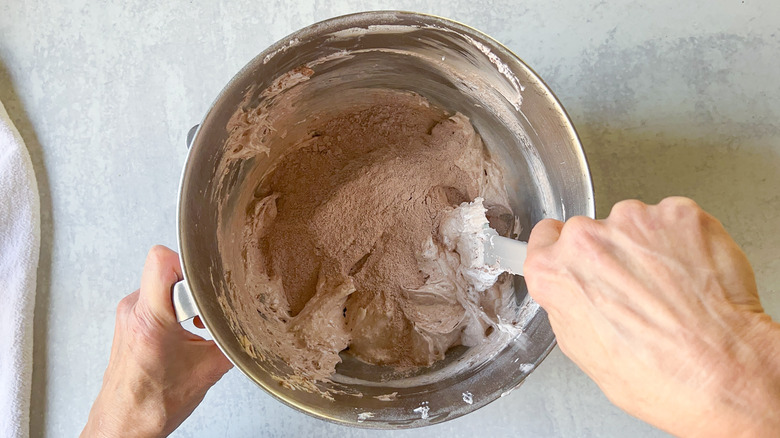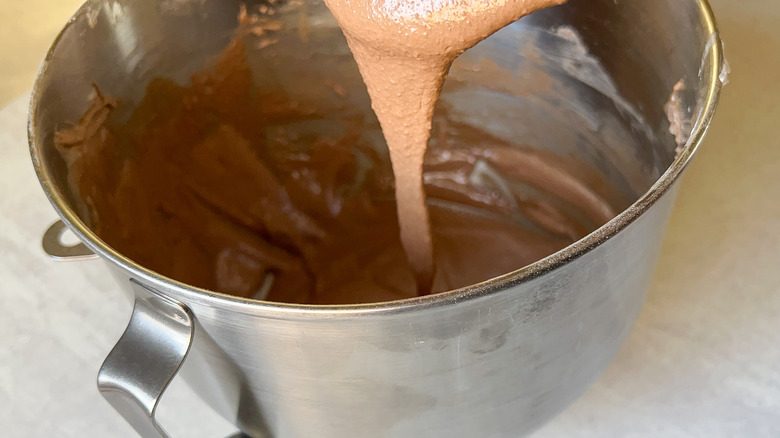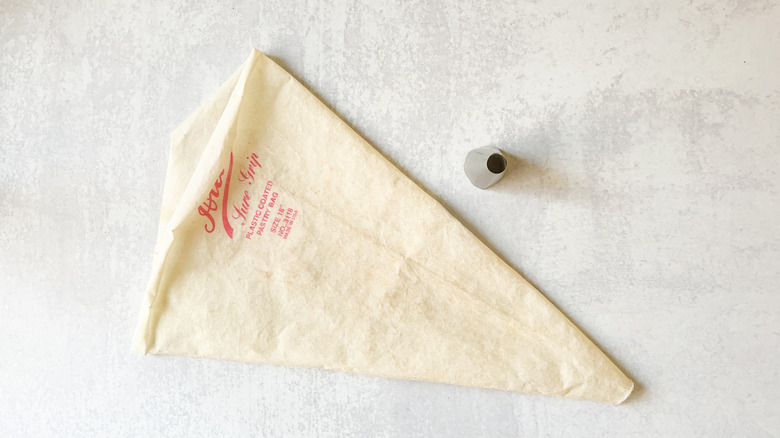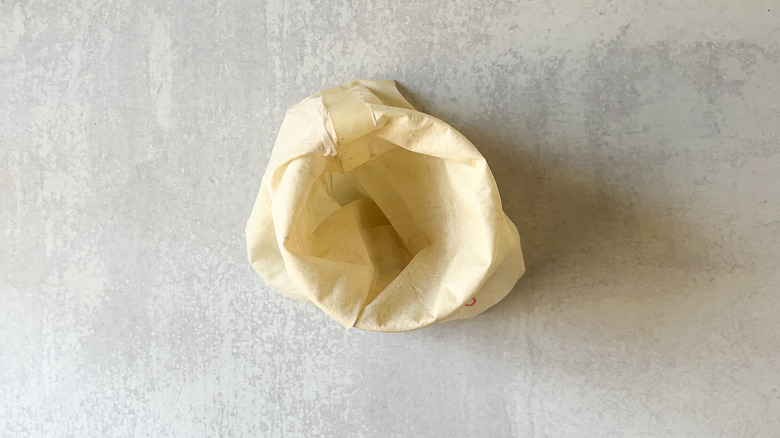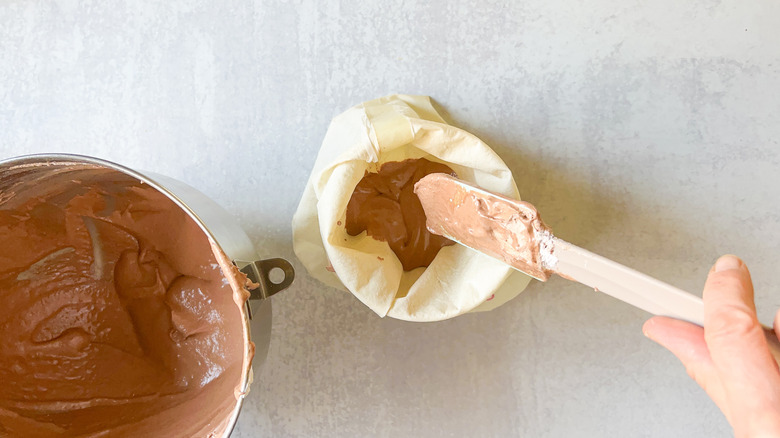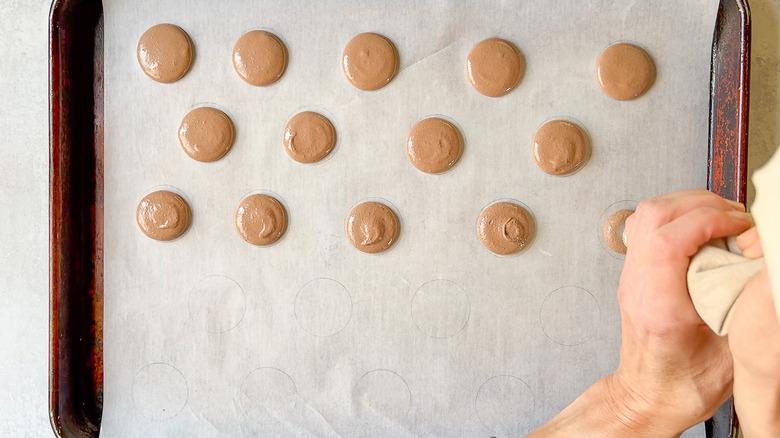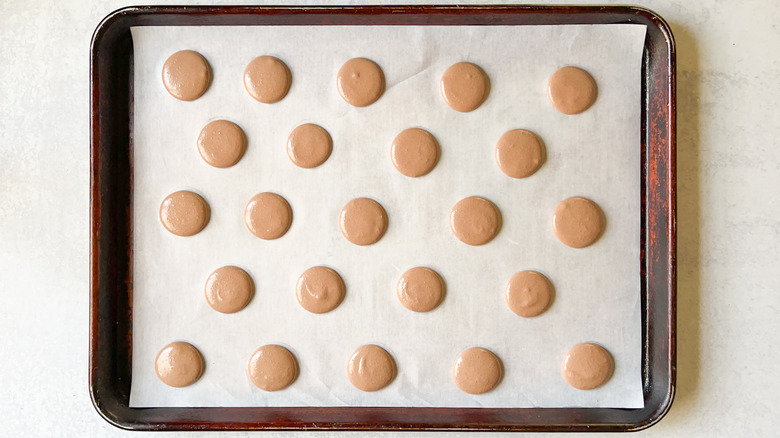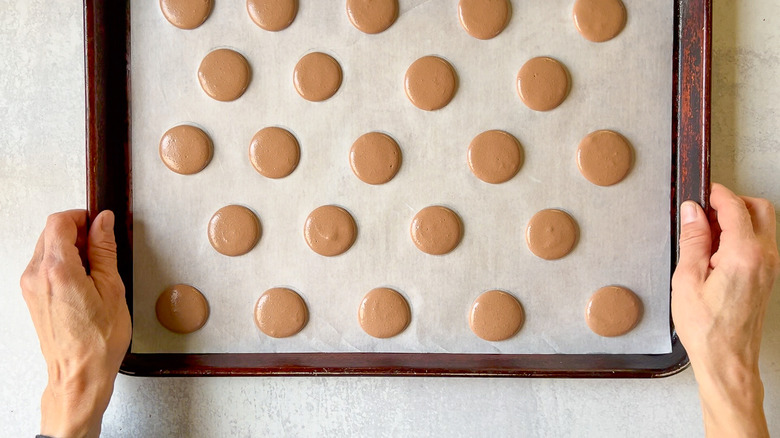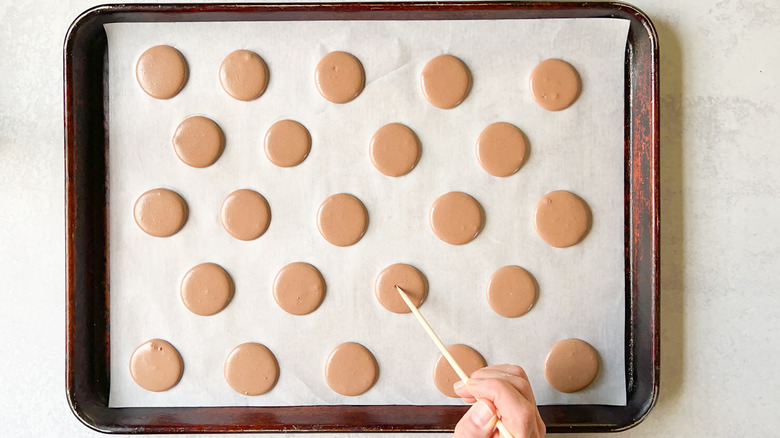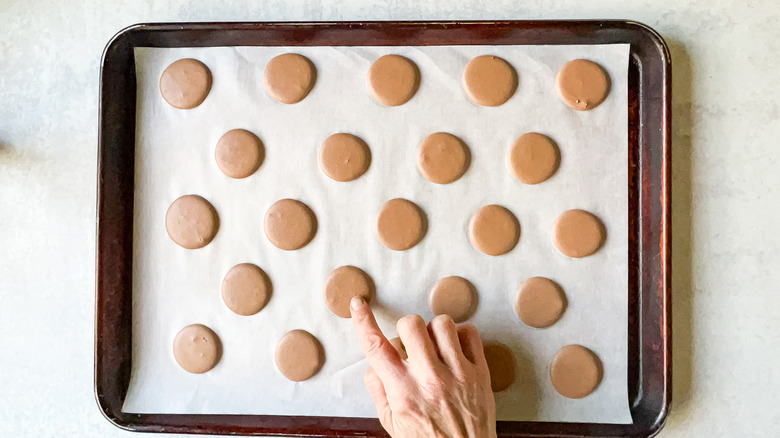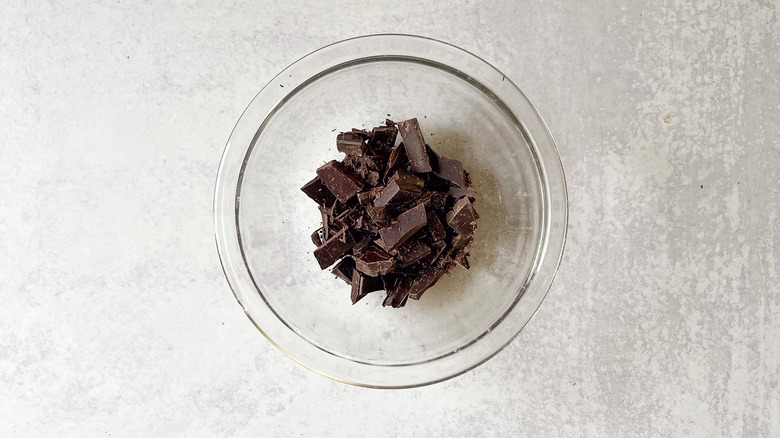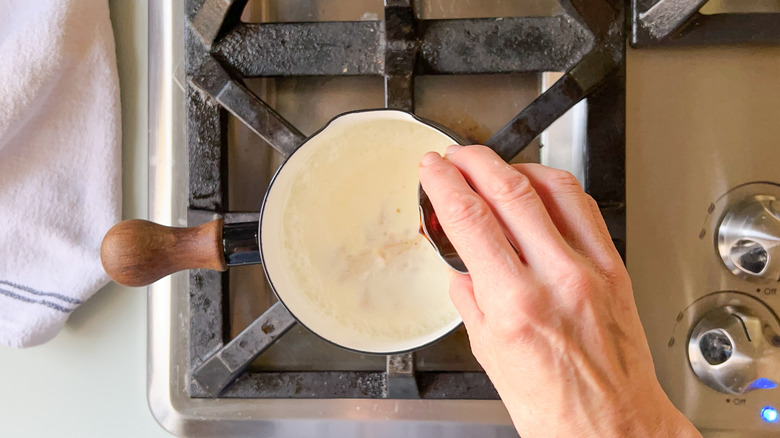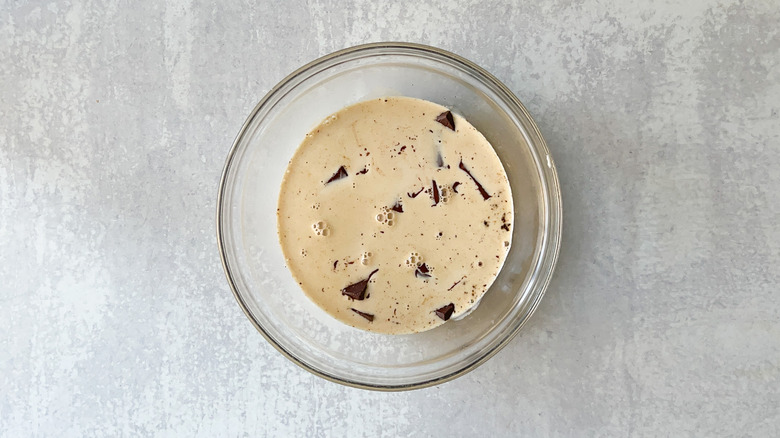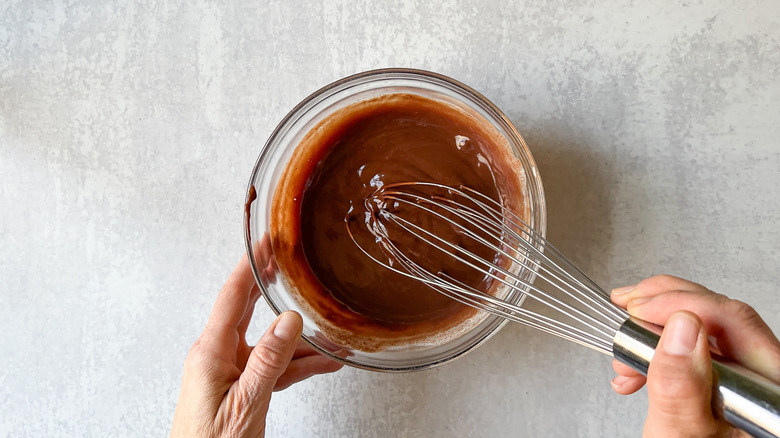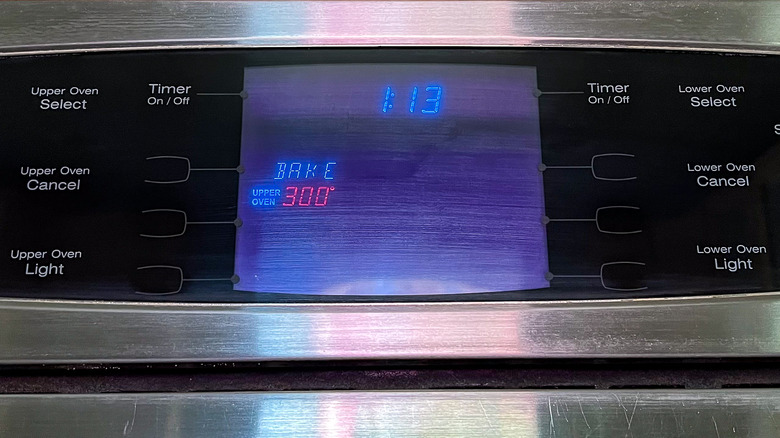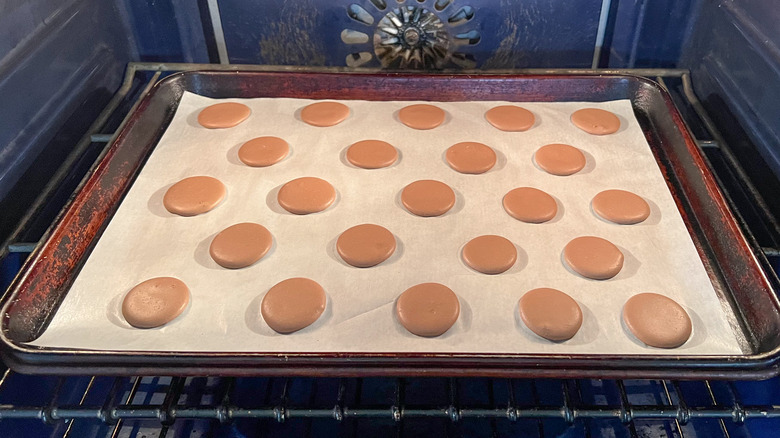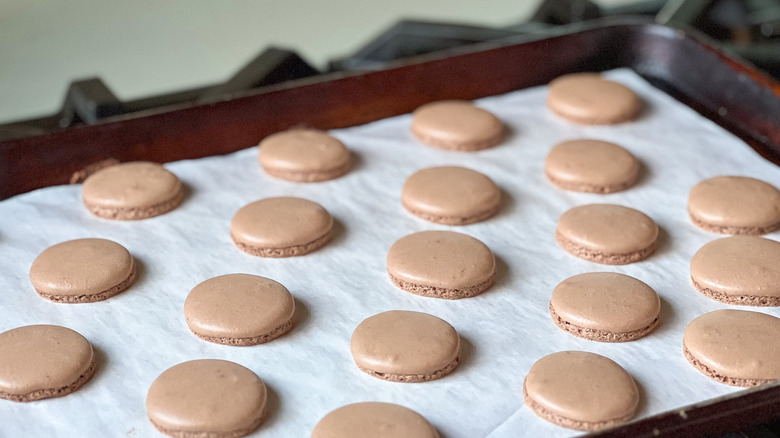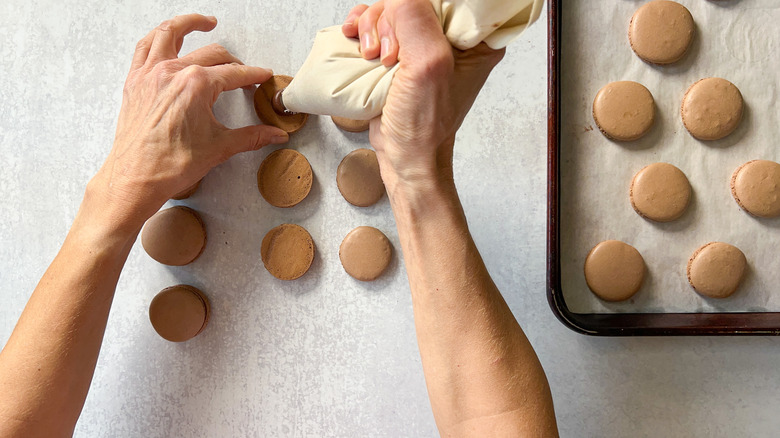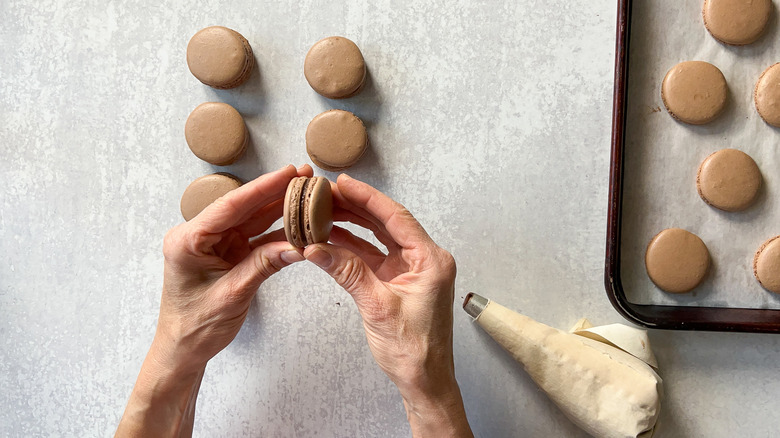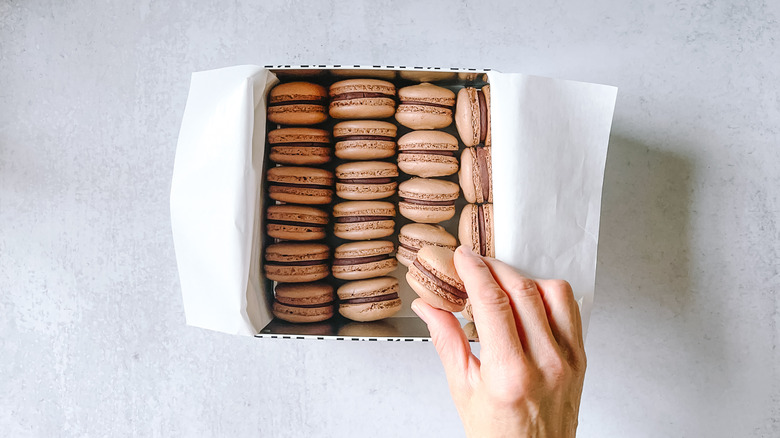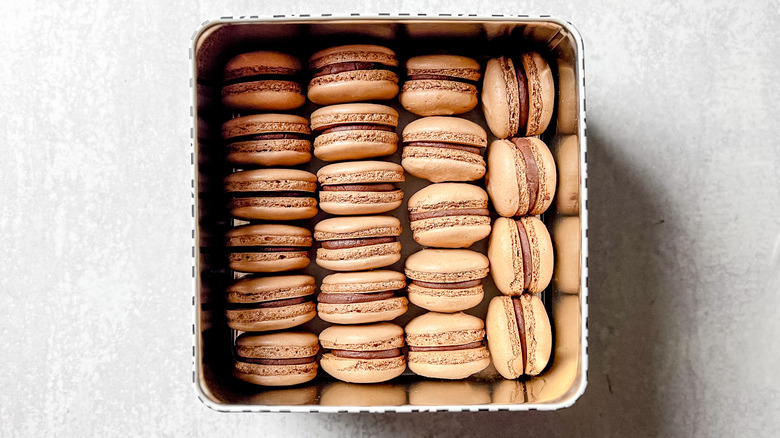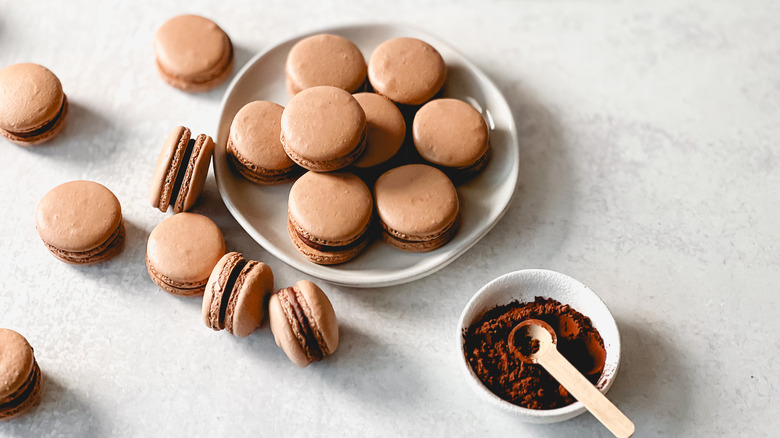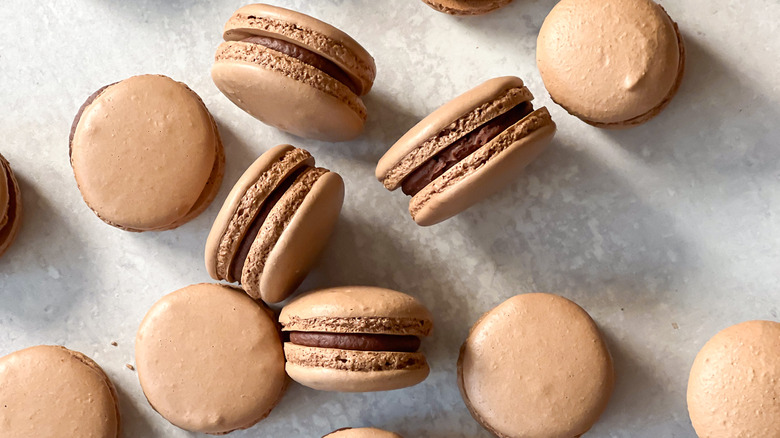Delicate, Decadent Chocolate Macarons Recipe
Making classic Parisian-style macarons at home may seem a bit daunting, but with a few helpful pointers and a little practice, you will be able to create patisserie-ready confections. This recipe for delicate, decadent chocolate macarons — courtesy of recipe developer Julie Kinnaird – outlines the basic steps for mixing and baking crisp, ruffled shells and how to fill them with a rich dark chocolate ganache.
Kinnaird explains that one of the keys to success with this recipe is to use high-quality ingredients, especially the almond flour and bittersweet chocolate, for optimal texture and flavor. Precise measuring and having the egg whites at room temperature before mixing will also help yield smooth shells, the desired macaron frilly "feet", and eliminate cracking during baking.
The addition of unsweetened cocoa powder to the shell batter gives a subtle chocolate color and flavor, which contrasts with the intense richness of the dark chocolate ganache.
Gather the ingredients for delicate, decadent chocolate macarons
To make these classic French chocolate macaron shells, you will need confectioner's sugar, finely ground almond flour, unsweetened cocoa powder, egg whites, salt, and granulated sugar. To prepare the ganache filling, use a high-quality bittersweet chocolate that is at least 85% cacao, heavy cream, vanilla extract, and some espresso powder and Kahlua to enhance the chocolate flavor with a coffee essence.
Step 1: Line sheet pans with parchment
Prepare 2 baking sheets by lining them with parchment paper.
Step 2: Trace circles on parchment
Trace 1-inch circles with a pencil, spacing them evenly in rows of 4 or 5. Flip the parchment over and set aside.
Step 3: Mix dry ingredients in food processor bowl
Place the confectioner's sugar, almond flour, and cocoa powder in the bowl of a food processor.
Step 4: Pulse ingredients to combine
Pulse until all ingredients are combined.
Step 5: Sift mixture into bowl
Using a fine sieve, sift the mixture into a medium bowl to remove any lumps. Set aside.
Step 6: Add egg whites to mixer bowl
Place the egg whites and salt in a stand mixer bowl. Make sure that the bowl is grease-free before using.
Step 7: Add granulated sugar to whites
Beat the whites on medium-low using a whisk attachment until they are very frothy and starting to form soft peaks. Gradually add the granulated sugar in a slow, steady stream.
Step 8: Beat whites until stiff
Increase the mixer speed to high and continue beating the whites until they are glossy and stiff peaks have formed (about 7 minutes).
Step 9: Fold dry ingredients into beaten whites
Using a rubber spatula, carefully fold 1/3 of the dry mixture into the beaten whites until fully incorporated, scraping down the sides and bottom of the bowl as you go.
Step 10: Fold in remaining dry ingredients
Add the remaining dry mixture, folding it in until the batter is smooth and glossy and has no trace of dry mixture left.
Step 11: Complete the macaronage
Test to see if the batter is ready by lifting some of it out of the bowl with the spatula. If it flows in a slow, steady stream from the spatula, it is ready to pipe. If it is still too thick, give it a few more folds and test again.
Step 12: Prepare a pastry bag for piping
To pipe the shells, fit a reusable or disposable pastry bag with a ½-inch straight tip.
Step 13: Position pastry bag for filling
Place the pastry bag over a tall glass or container, folding the top over to make a cuff.
Step 14: Fill pastry bag with macaron batter
Transfer the batter into the bag until it is half full. This makes the bag easier to twist close and hold for piping.
Step 15: Pipe the macaron shells
Hold the tip directly above one of the circles and squeeze just until the batter reaches the edge. Release the pressure and make a clockwise half-circle motion to prevent the shell from having a peak in the batter.
Step 16: Finish piping the shells
Repeat with each circle, refilling the pastry bag as needed.
Step 17: Tap baking sheet on countertop to release air bubbles from shells
Once the shells are piped, hold the baking sheet 3-4 inches above your work surface and gently drop the sheet down to release air bubbles from the shells. Repeat this process at least 4 times.
Step 18: Remove remaining air bubble with wooden pick
Use a wooden skewer or toothpick to pierce any remaining air bubbles.
Step 19: Dry the macaron shells before baking
Let the macaron shells sit uncovered for 45 minutes to 1 hour to dry slightly and form a "skin" before baking. Test to see if they are ready by gently running a finger over the surface. If it slides easily without feeling tacky, the shells are ready to bake.
Step 20: Start the ganache
Start preparing the ganache by placing the chopped chocolate and espresso powder in a medium heat-proof bowl.
Step 21: Heat cream with Kahlua and vanilla
In a small saucepan, bring the cream to a boil over medium heat. Add the Kahlua and vanilla and remove from the stove.
Step 22: Pour hot cream over chocolate
Pour the cream mixture over the chocolate and let sit for 5 minutes.
Step 23: Whisk the ganache until smooth
Whisk the ganache until smooth and let sit at room temperature until it is firm enough to pipe (about 1 hour).
Step 24: Preheat oven
Preheat oven to 300 F.
Step 25: Bake the macaron shells
Bake the shells for 16-18 minutes until the ruffled "feet" have formed at the bottoms of the shells and they are firm when touched.
Step 26: Cool the macaron shells
Allow the shells to cool completely before removing them from the parchment. Match the shells up in pairs.
Step 27: Pipe ganache into shells
Transfer the ganache to a piping bag fitted with the same tip as used for the shells. Pipe a generous teaspoon onto the flat sides of half of the shells.
Step 28: Assemble the macarons
Sandwich the remaining shells onto the ganache to form the macarons.
Step 29: Chill the macarons
Chill the macarons for 12-24 hours for optimal taste. The shells will begin to soften as they absorb a bit of moisture from the filling, making them chewy.
Step 30: Store the macarons
Store the macarons in a closed container in the refrigerator for up to a week, or in a freezer for up to 6 months.
What are some tips for success when making delicate, decadent chocolate macarons?
Kinnaird believes that there are five crucial factors for successful Parisian-style macarons: high-quality ingredients, room-temperature egg whites, grease-free bowls and tools, proper oven temperature, and the macaronage or proper mixing of the shell batter. Kinnaird explains that macaronage is the process of folding the dry ingredients into the stiffly beaten whites to achieve the proper consistency. A properly mixed batter will become glossy and will flow easily from a spoon when lifted from the mixer bowl. Undermixing will create rounded or cracked shells which may lack "feet." The macaron feet are the ruffled edges that form during baking, giving the macarons their signature appearance. A batter that is over-mixed may result in too much spread or feet that protrude outward rather than up. This flaw can also be caused by an oven that is too hot. It is critical to allow the macaron shells to dry slightly before baking. The "skin" that forms on the surface also helps to avoid a cracked surface or excessive spread while baking.
Grease will interfere with the proper whipping of the egg whites. Try rubbing a cut lemon on the inner surface of your mixing bowl to remove any traces of grease or fat. Rinse and dry the bowl thoroughly before proceeding with the recipe. Sifting the dry ingredients before starting the macaronage will help prevent a lumpy batter.
What is the best way to serve delicate, decadent chocolate macarons?
Delicate, decadent chocolate macarons are best served after they have chilled for 24 hours. This gives the shells time to soften and absorb a bit of moisture from the ganache filling, which creates a chewy bite and well-developed flavor. Serve the macarons at room temperature after chilling, as this will allow the flavors to really come out. The macarons pair perfectly with coffee at the end of a meal, or as a special morning treat!
These macarons freeze quite well and will maintain their chewy yet airy texture once thawed. You can also try baking a batch of the shells to freeze and fill later with freshly made ganache. Try flavoring the ganache with other liqueurs, such as amaretto or Frangelico, and omitting the espresso powder for a different flavor profile. The delicate chocolate shells would also be delicious filled with a raspberry or apricot jam as an alternative to the ganache.
Delicate, Decadent Chocolate Macarons
This recipe for delicate, decadent chocolate macarons, outlines the steps for making crisp, ruffled shells and how to fill them with a dark chocolate ganache.
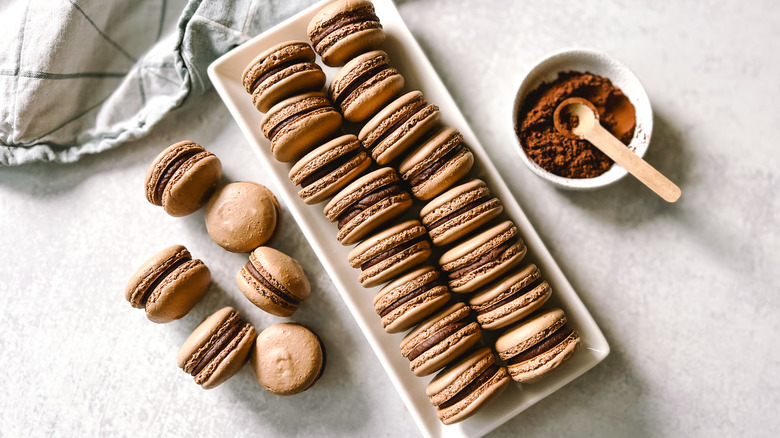
Ingredients
- For the shells
- 1 cup confectioner's sugar
- ¾ cup extra-fine blanched almond flour
- 5 tablespoons unsweetened cocoa powder
- 3 large egg whites, room temperature
- ¼ teaspoon salt
- 5 tablespoons extra-fine granulated sugar
- For the ganache filling
- 4 ounces bittersweet chocolate, chopped (at least 85% cacao)
- ½ teaspoon espresso powder
- 4 ounces heavy cream
- 2 teaspoons Kahlua
- 1 teaspoon vanilla extract
Directions
- Prepare 2 baking sheets by lining them with parchment paper.
- Trace 1-inch circles with a pencil, spacing them evenly in rows of 4 or 5. Flip the parchment over and set aside.
- Place the confectioner's sugar, almond flour, and cocoa powder in the bowl of a food processor.
- Pulse until all ingredients are combined.
- Using a fine sieve, sift the mixture into a medium bowl to remove any lumps. Set aside.
- Place the egg whites and salt in a stand mixer bowl. Make sure that the bowl is grease-free before using.
- Beat the whites on medium-low using a whisk attachment until they are very frothy and starting to form soft peaks. Gradually add the granulated sugar in a slow, steady stream.
- Increase the mixer speed to high and continue beating the whites until they are glossy and stiff peaks have formed (about 7 minutes).
- Using a rubber spatula, carefully fold 1/3 of the dry mixture into the beaten whites until fully incorporated, scraping down the sides and bottom of the bowl as you go.
- Add the remaining dry mixture, folding it in until the batter is smooth and glossy and has no trace of dry mixture left.
- Test to see if the batter is ready by lifting some of it out of the bowl with the spatula. If it flows in a slow, steady stream from the spatula, it is ready to pipe. If it is still too thick, give it a few more folds and test again.
- To pipe the shells, fit a reusable or disposable pastry bag with a ½-inch straight tip.
- Place the pastry bag over a tall glass or container, folding the top over to make a cuff.
- Transfer the batter into the bag until it is half full. This makes the bag easier to twist close and hold for piping.
- Hold the tip directly above one of the circles and squeeze just until the batter reaches the edge. Release the pressure and make a clockwise half-circle motion to prevent the shell from having a peak in the batter.
- Repeat with each circle, refilling the pastry bag as needed.
- Once the shells are piped, hold the baking sheet 3-4 inches above your work surface and gently drop the sheet down to release air bubbles from the shells. Repeat this process at least 4 times.
- Use a wooden pick to pierce any remaining air bubbles.
- Let the macaron shells sit uncovered for 45 minutes to 1 hour to dry slightly and form a "skin" before baking. Test to see if they are ready by gently running a finger over the surface. If it slides easily without feeling tacky, the shells are ready to bake.
- Start preparing the ganache by placing the chopped chocolate and espresso powder in a medium heat-proof bowl.
- In a small saucepan, bring the cream to a boil over medium heat. Add the Kahlua and vanilla and remove from the stove.
- Pour the cream mixture over the chocolate and let sit for 5 minutes.
- Whisk the ganache until smooth and let sit at room temperature until it is firm enough to pipe (about 1 hour).
- Preheat oven to 300 F.
- Bake the shells for 16-18 minutes until the ruffled "feet" have formed at the bottoms of the shells and they are firm when touched.
- Allow the shells to cool completely before removing them from the parchment. Match the shells up in pairs.
- Transfer the ganache to a piping bag fitted with the same tip as used for the shells. Pipe a generous teaspoon onto the flat sides of half of the shells.
- Sandwich the remaining shells onto the ganache to form the macarons.
- Chill the macarons for 12-24 hours for optimal taste. The shells will begin to soften as they absorb a bit of moisture from the filling, making them chewy.
- Store the macarons in a closed container in the refrigerator for up to a week, or in a freezer for up to 6 months.
